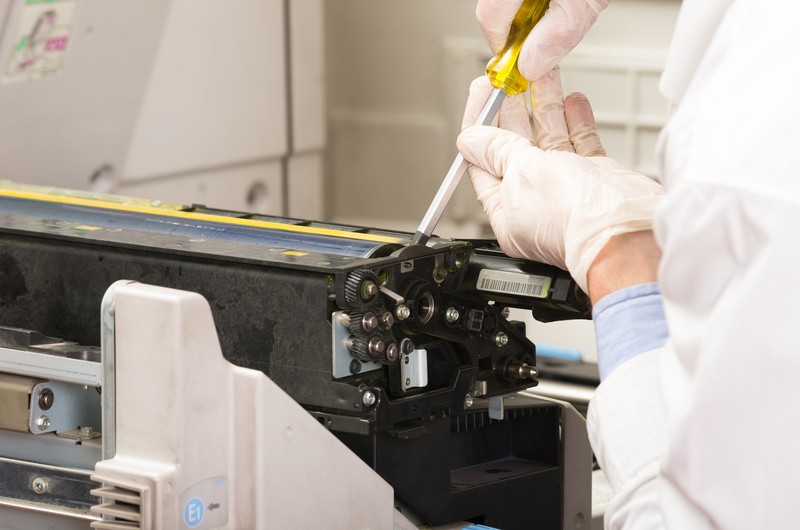Greener Packaging Options
Posted on 14/11/2024
In an era where environmental concerns are at the forefront of global discourse, businesses and consumers alike are increasingly turning their attention towards sustainable solutions. One of the most significant areas of focus is packaging, as it makes up a substantial portion of the waste generated worldwide. This article delves into greener packaging options, examining their benefits, impacts, and how they can contribute to a more sustainable future.
Understanding the Need for Greener Packaging
Traditional packaging materials, particularly plastics, have devastating environmental impacts. These materials are often non-biodegradable, and their decomposition can take hundreds of years, contributing to landfills and pollution. Approximately 8 million metric tons of plastic end up in the oceans annually, posing a severe threat to marine life and ecosystems.
The shift towards greener packaging options aims to reduce the environmental footprint associated with packaging. This move is not only driven by regulatory pressures but also by changing consumer preferences. Modern consumers are more environmentally conscious and prefer products that come in sustainable packaging.

Types of Greener Packaging Options
There are several types of greener packaging options that businesses can adopt to enhance their sustainability profiles:
1. Biodegradable Plastics
Biodegradable plastics are designed to break down more quickly than traditional plastics. Made from natural materials such as corn starch or sugarcane, these plastics decompose under the right conditions, reducing their impact on the environment.
2. Compostable Packaging
Compostable packaging takes biodegradable packaging a step further. It not only breaks down but also turns into nutrient-rich compost. This type of packaging is ideal for food and organic waste, as it can be composted along with the waste.
3. Recyclable Materials
Recyclable materials are another cornerstone of greener packaging. These materials can be reprocessed and reused, minimizing the need for virgin resources. Common recyclable materials include paper, glass, metal, and certain types of plastics.
4. Edible Packaging
Edible packaging is an innovative solution where the packaging itself can be consumed. Made from materials like seaweed, rice paper, and other natural ingredients, this type of packaging eliminates waste entirely.
5. Plant-Based Packaging
Plant-based packaging is made from renewable resources such as bamboo, hemp, and mushroom mycelium. These materials are not only sustainable but also biodegradable, making them an excellent alternative to conventional packaging.
Benefits of Greener Packaging Options
The adoption of greener packaging options brings numerous benefits, both for the environment and businesses:
1. Environmental Impact
The most obvious benefit of greener packaging is its reduced environmental impact. By choosing sustainable materials, businesses can significantly cut down on waste, lower carbon emissions, and lessen the burden on landfills and oceans.
2. Brand Image and Consumer Loyalty
Consumers are increasingly favoring brands that demonstrate a commitment to sustainability. By adopting greener packaging, businesses can enhance their brand image, attract environmentally conscious customers, and build consumer loyalty.
3. Regulatory Compliance
Many governments are implementing stricter regulations regarding packaging materials and waste. By proactively adopting greener packaging options, businesses can stay ahead of regulations and avoid potential fines and penalties.
4. Cost Savings
While some greener packaging options may have higher initial costs, they can lead to long-term savings. Recyclable and reusable materials can reduce the need for continuous production and lower waste disposal costs.
5. Innovation Opportunities
Embracing greener packaging can also spark innovation. Businesses that invest in sustainable packaging solutions can differentiate themselves in the market and create unique selling propositions.
Challenges in Implementing Greener Packaging
Despite the numerous benefits, there are challenges that businesses may face when transitioning to greener packaging:
1. Cost Implications
Some greener packaging options can be more expensive than traditional materials. For small businesses, this cost difference can be a significant barrier. However, as demand for sustainable packaging grows, economies of scale may help reduce costs over time.
2. Infrastructure for Recycling and Composting
The effectiveness of recyclable and compostable packaging depends heavily on the availability of appropriate infrastructure. In regions lacking robust recycling or composting facilities, the environmental benefits of these materials may not be fully realized.
3. Material Properties and Performance
Greener packaging materials may have different properties compared to traditional plastics, such as reduced durability or shelf life. Businesses need to ensure that these materials meet their functional requirements without compromising product quality.
4. Consumer Education
Educating consumers on the proper disposal of green packaging is crucial. Without adequate knowledge, consumers may inadvertently dispose of biodegradable or compostable packaging inappropriately, diminishing their environmental benefits.
Strategies for Adopting Greener Packaging
To successfully transition to greener packaging, businesses can adopt several strategies:
1. Conducting a Packaging Audit
A comprehensive packaging audit can help identify areas where sustainable alternatives can be implemented. This audit should assess current packaging materials, usage patterns, and potential areas for improvement.
2. Partnering with Sustainable Suppliers
Collaborating with suppliers who specialize in sustainable packaging can simplify the transition process. These suppliers can provide valuable insights, innovative solutions, and the necessary materials for greener packaging.
3. Investing in Research and Development
Investing in R&D can lead to the development of new, innovative packaging solutions tailored to specific business needs. By prioritizing sustainability in their research agendas, businesses can stay at the forefront of packaging innovation.
4. Educating Stakeholders
Educating employees, suppliers, and consumers about the benefits and proper disposal of green packaging is vital. Awareness campaigns, training programs, and clear labeling can facilitate correct handling and disposal practices.

Success Stories in Greener Packaging Adoption
Several companies have successfully transitioned to greener packaging, setting benchmarks for others in their industries:
1. Unilever
Unilever has committed to making all of its plastic packaging reusable, recyclable, or compostable by 2025. The company is also working towards reducing its use of virgin plastic by 50% and increasing the use of post-consumer recycled plastic.
2. IKEA
IKEA has been a pioneer in sustainable packaging, aiming to use only renewable or recycled materials by 2030. The company has also introduced innovative solutions such as mushroom-based packaging for its products.
3. Dell
Dell has incorporated mushroom-based packaging in its product shipments. This packaging is not only biodegradable but also provides excellent protection for delicate electronics during transit.
4. Lush
Lush, a cosmetics company, has been at the forefront of sustainable packaging. The company offers a range of "naked" products that come without any packaging at all, reducing waste significantly.
Conclusion
Greener packaging options represent a crucial step towards a more sustainable future. By understanding the types, benefits, and challenges associated with sustainable packaging, businesses can make informed decisions that align with their environmental goals. Through strategic adoption and continuous innovation, the transition to greener packaging can lead to lasting positive impacts on both the environment and the business landscape.






